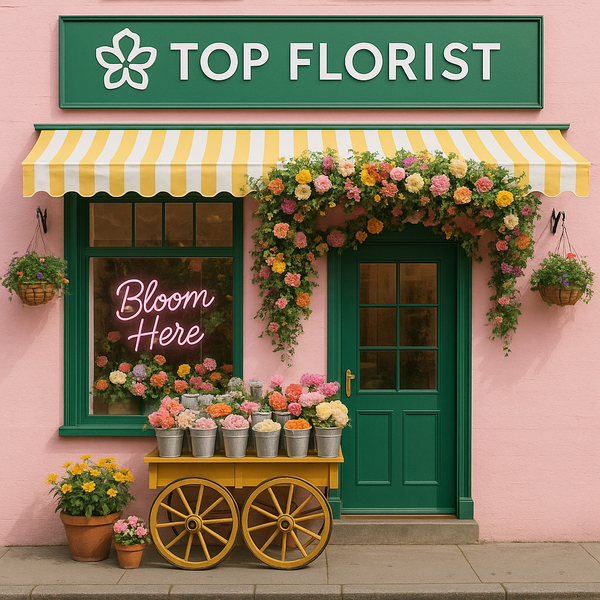
Fundamentals of Flowers: The Hidden Foundations That Preserve Life Beyond the Bloom
Share
Every flower that opens carries with it a silent equation—how much sunlight it’s absorbed, how deeply its roots have held the soil, how the air and the water decided to treat it that week. The fundamentals of floral life are delicate, but not fragile. They’re precise, ancient, and yet forgiving. Understanding them doesn’t just make a bouquet last longer—it makes us more aware of life’s timing and patience.
1. The Invisible Architecture of a Stem
At the heart of every flower lies its stem—the lifeline. Inside, a complex transport system called the xylem and phloem moves water and nutrients up and down, like a hidden elevator of life. When we cut a flower from its root, we interrupt this system. That’s why florists cut stems at a sharp diagonal, allowing more surface area for water to be drawn in. It seems small, but in the world of petals and seconds, it’s everything.
Always cut stems under running lukewarm water, never in air. The air can block the vascular system—tiny air pockets that stop the flow like a heartbeat skipping a beat. Once that happens, no matter how beautiful the bloom, it won’t last as long as it deserves to.
2. Water Quality: The Most Overlooked Foundation
People often think flowers need just water, but it’s not that simple. Tap water varies in minerals, pH, and even chlorine levels—all of which affect petal life. The ideal pH for most cut flowers is slightly acidic, around 3.5 to 5.0. This helps water move easily through the stem. If that sounds technical, just remember this: a drop of lemon juice or a splash of clear soda in your vase water can do wonders.
Clean water is the flower’s only real conversation partner. Change it every two days, and wash the vase each time. Bacteria is the quiet thief—it clogs stems, steals oxygen, and shortens the bloom’s breath of life.
3. Temperature & Light: The Gentle Balancers
Flowers, like people, have moods that depend on environment. Too much light and they wilt quickly. Too little and their colors fade before they’re even seen. Most cut flowers prefer cool, indirect light and room temperatures between 60–70°F. The same bouquet that thrives on your kitchen counter may struggle near a sunny window.
Nighttime can be their saving grace. Storing arrangements in a cooler room (or fridge if it’s safe and clean) can extend their lifespan overnight. It’s almost like giving them a few extra hours of sleep—a pause button for beauty.
4. Food for the Soul (and Stem)
Flower food isn’t a marketing gimmick—it’s chemistry simplified. Those little packets often include sugar (energy), acid (to stabilize pH), and a biocide (to fight bacteria). Without it, flowers rely on what’s left from their roots, which isn’t much after a day or two.
If you run out of commercial packets, you can make your own. Mix a teaspoon of sugar, a few drops of bleach, and a teaspoon of lemon juice in a quart of warm water. It sounds oddly culinary, but the mix keeps bacteria away and gives the stems the energy they need to hold their posture.
5. Ethylene: The Silent Enemy
Ethylene gas is produced naturally by ripening fruit—and it’s deadly to flowers. It accelerates aging, causing petals to curl and fall. That’s why you should never store flowers near apples or bananas. They’ll look innocent sitting on the counter, but they’re quietly releasing a hormone that speeds up decay.
Some flowers, like lilies and carnations, are especially sensitive. Keeping them in fresh air and away from fruit baskets helps maintain their bloom days longer.
6. The Unspoken Ritual of Care
Preserving floral life is as much ritual as science. It’s about returning every two days to trim stems slightly, refresh water, and pause to notice how petals evolve. Flowers don’t bloom forever, but they teach us how to sustain grace for as long as we can.
Sometimes, even with perfect care, a flower wilts sooner than expected. That’s part of their honesty—they remind us that everything living moves in cycles. Preservation isn’t about freezing time; it’s about cherishing it.
7. Beyond Preservation: The Lesson of Transience
In the end, every petal that falls adds to the quiet story of impermanence. Florists know this well—every arrangement is temporary, and maybe that’s the point. The goal isn’t to stop a flower from fading, but to give it the best conditions to shine while it’s here.
When we understand the foundations—the structure, the water, the air—we start treating beauty not as something fragile, but something worth maintaining with intention. It’s science, yes, but it’s also love in motion.
So next time you hold a bouquet, remember: its life depends not just on nature, but on your care, your timing, and your willingness to listen to something that doesn’t speak back.
